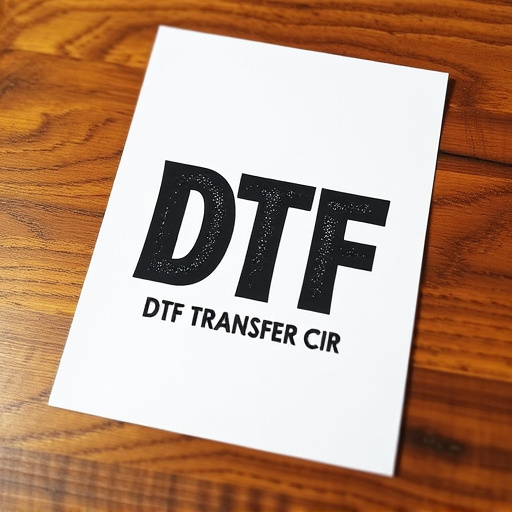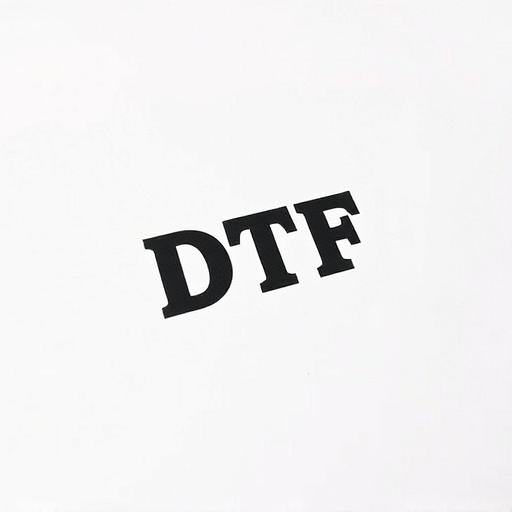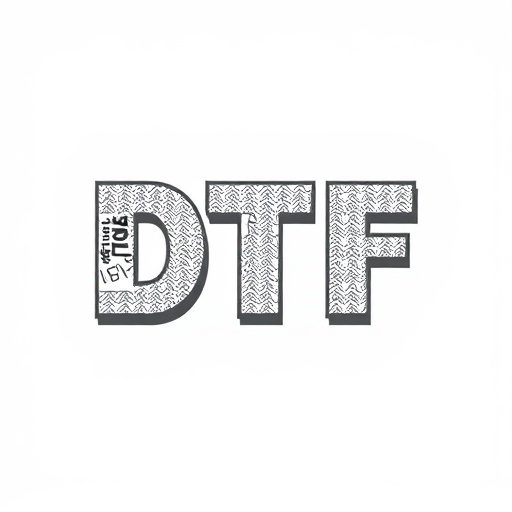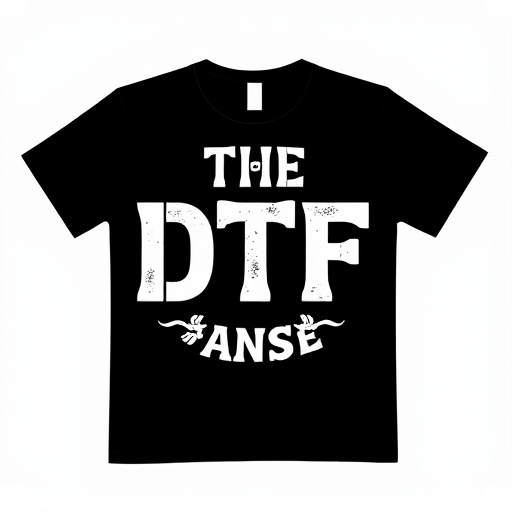Digital Thermal Transfer (DTF) technology offers revolutionary film transfers with long-lasting durability, vibrant colors, and crisp details. DTF prints directly onto media using heat-sensitive inks, preserving images for years even under rigorous use. This method involves heating original film sources to transfer their images to materials like vinyl or fabric. DTF is ideal for keepsakes, art, and promotional items, with advantages over traditional printing in durability, detail, and versatility. Material selection, advanced coatings, and rigorous testing ensure DTF transfers withstand washing and wear, transforming industries from film preservation to fashion design with a durable and visually stunning alternative.
Discover the future of printing with long-lasting DTF (Direct to Film) transfers that offer exceptional resistance to washing and wear. This cutting-edge technology revolutionizes traditional printing methods, ensuring vibrant colors and crisp details that withstand the test of time. From material selection to innovative coating techniques, this article explores the science behind DTF’s durability, backed by rigorous washing and wear tests. Uncover its diverse applications and glimpse into the exciting future prospects of DTF prints.
- Understanding DTF Transfer Technology: A Revolutionary Process
- Advantages of DTF Over Traditional Printing Methods
- Material Selection for Longevity: The Foundation of Resistance
- Enhancing Durability: Coating and Adhesive Techniques
- Washing and Wear Tests: Real-world Performance Evaluation
- Applications and Future Prospects of DTF Prints
Understanding DTF Transfer Technology: A Revolutionary Process

The Digital Thermal Transfer (DTF) process is a groundbreaking technology that has revolutionized film transfers, offering a long-lasting and durable solution resistant to washing and wear. Unlike traditional methods, DTF prints directly onto a variety of media using heat-sensitive inks. This innovative approach ensures vibrant colors and crisp details are preserved, making it ideal for preserving cherished memories.
DTF Transfer technology involves heating the film source, usually a photograph or print, and transferring its image onto a receiving material like vinyl or fabric through a precise thermal process. The result is an accurate replication that not only lasts for years but also withstands the test of time, even under rigorous use, making it the perfect choice for creating durable keepsakes, art pieces, or promotional items featuring DTF prints.
Advantages of DTF Over Traditional Printing Methods

The Digital Thermal Transfer (DTF) method offers significant advantages over traditional printing techniques when it comes to creating long-lasting film transfers. One of its key strengths lies in durability; DTF prints are resistant to fading, making them perfect for items that will see frequent handling and exposure to various environments. Unlike older printing methods, DTF ensures the colors remain vibrant and the images crisp even after extensive washing or wear.
Additionally, DTF Transfer provides a superior level of detail and precision. This technology allows for intricate designs and high-resolution prints, making it ideal for complex patterns and fine artwork. The process involves transferring dye directly onto the material, resulting in rich, saturated colors that traditional methods struggle to match. Moreover, DTF prints are known for their versatility, suitable for a wide range of materials and surfaces, ensuring a long-lasting and visually appealing finish on various products.
Material Selection for Longevity: The Foundation of Resistance
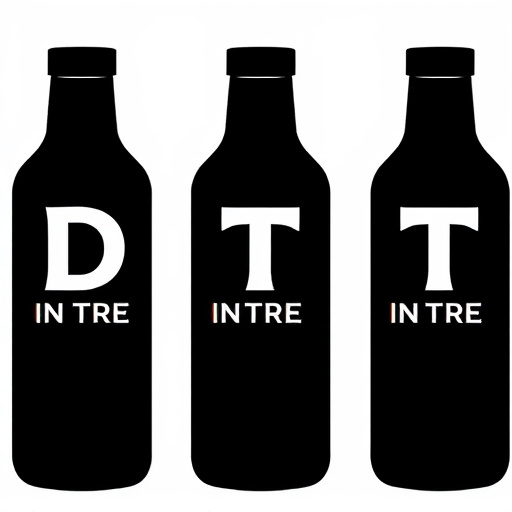
In the pursuit of long-lasting film transfers that withstand washing and wear, material selection plays a pivotal role. The foundation of resistance lies in understanding the characteristics of materials that can endure the rigors of time and handling. For DTF Transfers (Direct to Film) and DTF Printing, specific choices are crucial. High-quality, durable films with robust adhesives ensure that each print retains its vibrancy and integrity over extended periods. These materials must be resistant to fading, tearing, and chipping, even under frequent use or exposure to varying environmental conditions.
The process of DTF Printing involves depositing ink directly onto the film surface, creating prints that are inherently more resilient than traditional methods. The resulting DTF Prints offer superior resistance to water and other elements, making them ideal for applications demanding longevity. By selecting the right materials and employing advanced printing techniques, it becomes possible to create film transfers that not only resist washing and wear but also maintain their aesthetic appeal for years to come.
Enhancing Durability: Coating and Adhesive Techniques

Enhancing Durability through Coating and Adhesive Techniques
In the realm of DTF Transfer (Direct to Film) printing, ensuring long-lasting durability is paramount. One of the key aspects in achieving this resilience lies in the application of advanced coating technologies. These coatings serve as a protective layer, safeguarding the delicate DTF prints from environmental factors such as moisture, dust, and UV rays. By meticulously selecting resins and polymers for these coatings, manufacturers can create a robust barrier that enhances the overall longevity of the film transfers.
Moreover, the choice of adhesive plays an equally significant role in the durability process. High-performance adhesives specifically designed for DTF applications ensure a strong bond between the print and its substrate. This robust adhesion prevents prints from peeling or flaking over time, even under rigorous washing conditions. The synergy between advanced coatings and suitable adhesives ultimately contributes to the creation of indelible DTF prints that remain vibrant and intact, conveying their message for years to come.
Washing and Wear Tests: Real-world Performance Evaluation

Washing and wear tests are an essential part of evaluating the performance of DTF (Direct to Film) transfers in real-world scenarios. These rigorous assessments mimic everyday use, ensuring that the durability and longevity of DTF prints meet high standards. The tests involve subjecting the transferred images to various washing machines with different settings, simulating normal laundry practices. After multiple cycles, the prints are carefully examined for any signs of fading, color bleed, or loss of detail—crucial factors in determining their resistance to everyday wear and tear.
Additionally, accelerated wear testing involves rubbing and scraping the DTF transfers to mimic scuffs and scratches that might occur during handling or storage. This process helps identify potential weak points in the transfer’s design and application, allowing manufacturers to refine their techniques for producing more robust films. The outcome of these tests is invaluable data, offering insights into how well DTF prints hold up against everyday use, ensuring they remain vibrant and legible over time.
Applications and Future Prospects of DTF Prints

The applications of Direct to Film (DTF) transfers are vast and ever-growing. From archival preservation of precious films to creating durable promotional materials, DTF prints offer a unique and long-lasting solution. Their ability to withstand washing processes makes them ideal for clothing brands looking to produce high-quality, long-lasting garments with intricate designs. In the world of fashion, DTF transfers have become a game-changer, enabling designers to showcase their creative visions on a variety of fabrics without compromising on quality or durability.
Looking ahead, the future of DTF printing looks promising, especially as technology continues to advance. With improved ink formulations and print technologies, DTF transfers can offer even better resistance to wear and tear, making them suitable for outdoor signage, automotive applications, and more. As these prints gain popularity, we can expect to see them revolutionize various industries, providing a durable and visually appealing alternative to traditional printing methods.








